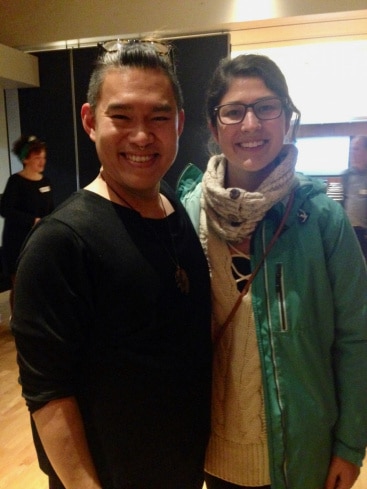Born in Singapore and having spent many years living in a “vertical village,” Francis Heng has seen firsthand how communities can flourish in high-rises. But when they first arrived in Vancouver 17 years ago, Heng experienced culture shock. In contrast to their hometown where high-rise living is the norm, they sensed building residents in Vancouver didn’t talk to each other.
“That was really strange for me,” Heng describes. “I saw a lot people were very shy and afraid to talk to their neighbours.”
Heng is not alone in their experiences. A 2012 Vancouver Foundation survey found loneliness, disconnection and isolation were top issues impacting the city’s residents. In Vancouver, where 45 per cent of the population lives in high rises, 1 the survey found levels of social connectedness are lower in high density multi-unit buildings. It was these findings and the City’s Healthy City Strategy goals, particularly those around improving social connections and helping residents to feel safe and included, that were the origins of the Hey Neighbour! project. With the support of a PlanH grant, the City-led pilot project explored how residents living in high-rises can better connect with each other through design improvements and social programs in their buildings. The ultimate goal? To build healthier, more resilient communities.

Photo credit: BC Healthy Communities.
An Easter egg hunt was one of the success stories they shared from the project.
“It was a very simple thing, it didn’t need to be complicated,” Heng emphasizes. Conceived and organized by the RAs for families in their 20-storey rental apartment building, the hunt connected 30 parents and their children. This event kicked off nine months of social activities.
Following the Easter egg hunt, the RAs hosted a “Hey Neighbour Chat” event to bring together neighbours to brainstorm and share ideas on how to create community in the building. Later, residents identified a need for more skill-based activities so they organized an emergency preparedness workshop and a municipal election voter registration information booth.
“From fun events, residents started to look at more tangible things they can do to support each other. That was very enlightening for us to see,” Heng says.
With support from Heng and the buildings’ property managers, the RA pairs were tasked with all the logistics for putting on the activities and much more. They bridged relationships between residents, promoted involvement in activities and events, developed communication mechanisms and tools, and built capacity for other residents to assist in community-building.
“Two property managers, Peter and Chris, were both very excited about this project.They offered a lot of help to the RAs: helping them put up posters, taking them go through places in the building no residents had ever accessed, helping them store things,” Heng says. “It really was a very collaborative effort to bring these events to the building once a month.”
Getting neighbours involved in social activities wasn’t always easy. In a smaller, six-storey rental building, an RA team initially found reaching their neighbours challenging. The building was home to residents of diverse backgrounds: including seniors, professionals, PhD and international students. In the building where there was no amenities room, fob-access was needed between floors, and all units had in-suite laundry—there were few opportunities for neighbours to run into each other.
“The residents had the idea that if we couldn’t engage their neighbours actively, then maybe we could engage them passively,” Heng explains. To do this, the RAs set up a “conversation board”—a white board in the lobby—where residents could exchange messages. One of the first questions the RAs wrote on the board asked: “How do you say hello in your language?”
“Surprisingly, after the first day of putting up that board, that board was plastered with answers,” Heng remembers. “For the first time, we got a visual of the number of languages that were spoken in this small building.”
Inspiring stories like these from the initial Hey Neighbour! pilot project, have sparked interest in the project from other municipalities. Now working independently of the City, the Hey Neighbour! collective is currently fundraising to launch its next phase this summer in partnership with other municipalities and organizations. Their partners include: the City of Vancouver, the City of Victoria, New Westminster, Metro Vancouver, Vancouver Coastal Health, Landlord BC, BC Non-Profit Housing Association and a number of private developers and landlords.
Watch a video about the Hey Neighbour! project below.
1Dominguez, S. (2016). Living up, or living apart? Addressing the social consequences of high-rise living. Vancouver, BC: City of Vancouver. Retrieved from https://vancouver.ca/files/cov/living-up-or-living-apart.pdf




